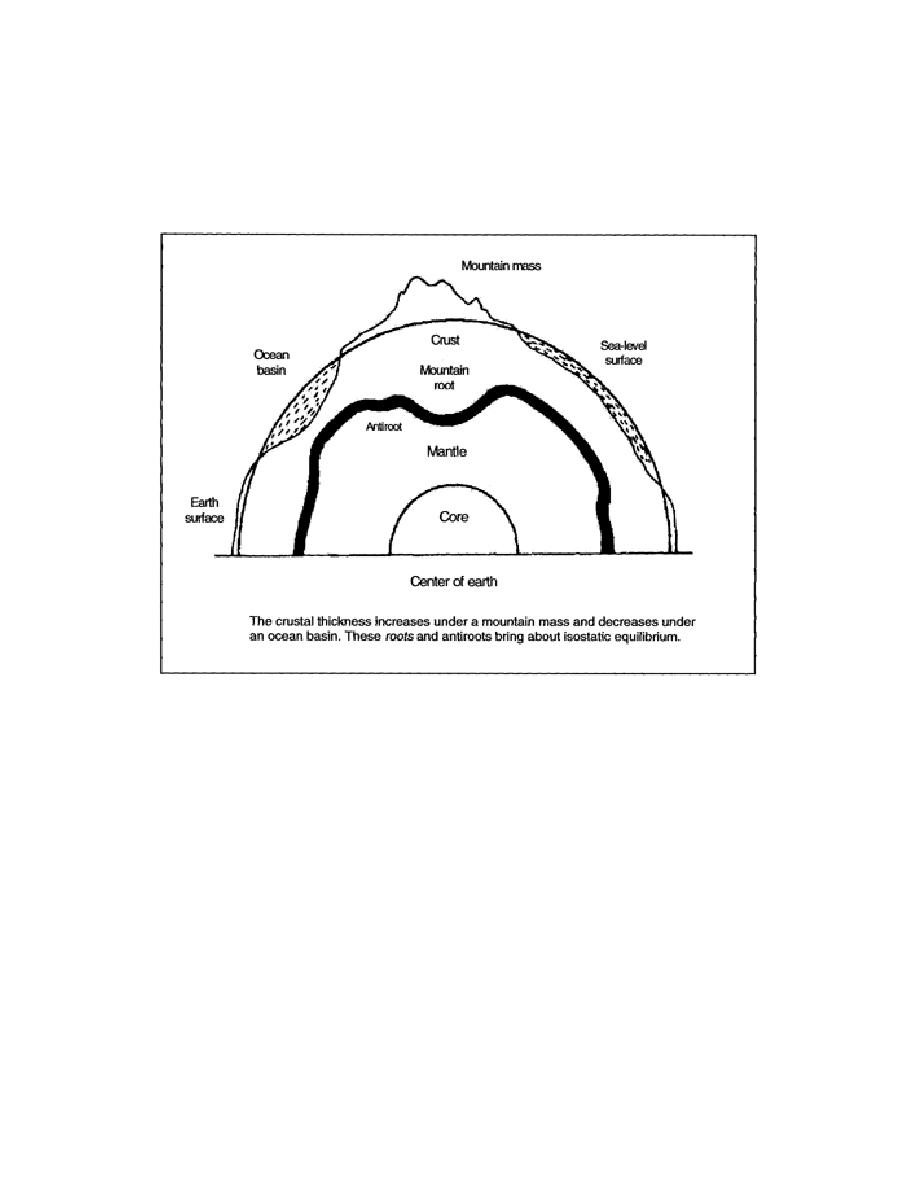
The Airy theory, announced by G. B. Airy in 1855, proposed that continents and
islands are resting hydrostatically on highly plastic or liquid material, with roots or
projections penetrating the inner material of the earth just as icebergs extend
downward into the water (Figure 1-13). The greater the elevation of mountain masses
above the earth, the deeper the penetration of the roots. It has been called the Roots
of Mountain Theory, and has the support of some geologists.
Figure 13. Airy's Theory of Compensation
j. The theoretical value of gravity at a point on the ellipsoid depends on the size and shape of the
ellipsoid and the observed value of gravity at the equator (978 gals). It also varies with the latitude of
the observation point, assuming that the earth is a surface without mountains and oceans, having no
variations in rock densities or in the thickness of the crust. The theoretical value of gravity represents
the force of the earth's attraction due to gravitation, minus the centrifugal force due to the rotation of the
earth.
k. Since the earth is not an ellipsoid and there are variations in both the crust material and the
terrain, the observed gravity of the geoid varies from point to point. Gravity observations must be made
so that the distance between the geoid and the
EN0593
1-20



 Previous Page
Previous Page
